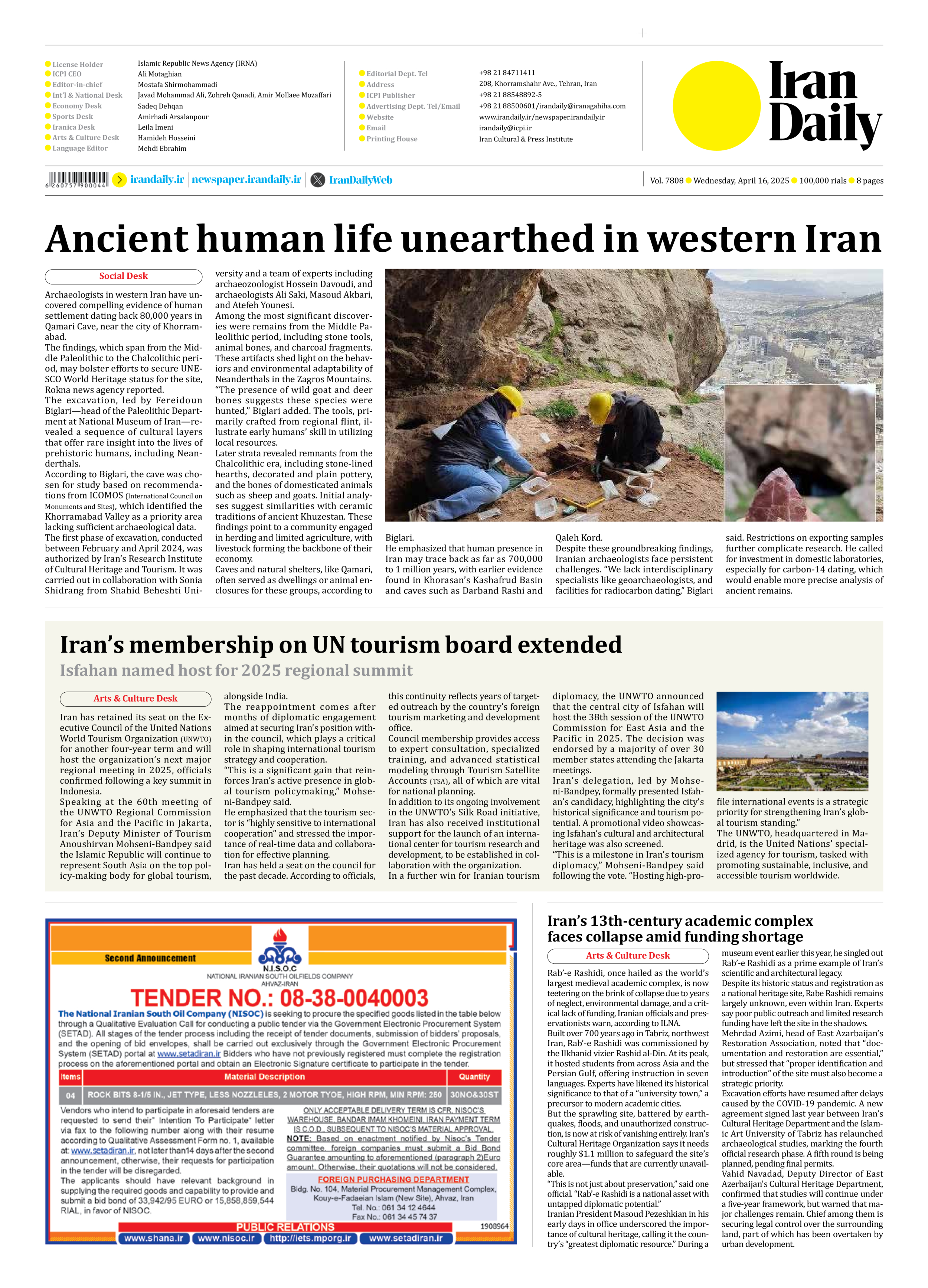
Ancient human life unearthed in western Iran
Archaeologists in western Iran have uncovered compelling evidence of human settlement dating back 80,000 years in Qamari Cave, near the city of Khorramabad.
The findings, which span from the Middle Paleolithic to the Chalcolithic period, may bolster efforts to secure UNESCO World Heritage status for the site, Rokna news agency reported.
The excavation, led by Fereidoun Biglari—head of the Paleolithic Department at National Museum of Iran—revealed a sequence of cultural layers that offer rare insight into the lives of prehistoric humans, including Neanderthals.
According to Biglari, the cave was chosen for study based on recommendations from ICOMOS (International Council on Monuments and Sites), which identified the Khorramabad Valley as a priority area lacking sufficient archaeological data.
The first phase of excavation, conducted between February and April 2024, was authorized by Iran’s Research Institute of Cultural Heritage and Tourism. It was carried out in collaboration with Sonia Shidrang from Shahid Beheshti University and a team of experts including archaeozoologist Hossein Davoudi, and archaeologists Ali Saki, Masoud Akbari, and Atefeh Younesi.
Among the most significant discoveries were remains from the Middle Paleolithic period, including stone tools, animal bones, and charcoal fragments. These artifacts shed light on the behaviors and environmental adaptability of Neanderthals in the Zagros Mountains.
“The presence of wild goat and deer bones suggests these species were hunted,” Biglari added. The tools, primarily crafted from regional flint, illustrate early humans’ skill in utilizing local resources.
Later strata revealed remnants from the Chalcolithic era, including stone-lined hearths, decorated and plain pottery, and the bones of domesticated animals such as sheep and goats. Initial analyses suggest similarities with ceramic traditions of ancient Khuzestan. These findings point to a community engaged in herding and limited agriculture, with livestock forming the backbone of their economy.
Caves and natural shelters, like Qamari, often served as dwellings or animal enclosures for these groups, according to Biglari.
He emphasized that human presence in Iran may trace back as far as 700,000 to 1 million years, with earlier evidence found in Khorasan’s Kashafrud Basin and caves such as Darband Rashi and Qaleh Kord.
Despite these groundbreaking findings, Iranian archaeologists face persistent challenges. “We lack interdisciplinary specialists like geoarchaeologists, and facilities for radiocarbon dating,” Biglari said. Restrictions on exporting samples further complicate research. He called for investment in domestic laboratories, especially for carbon-14 dating, which would enable more precise analysis of ancient remains.







